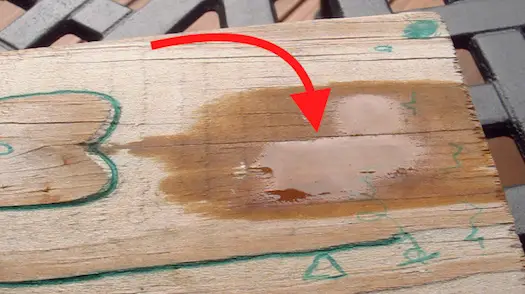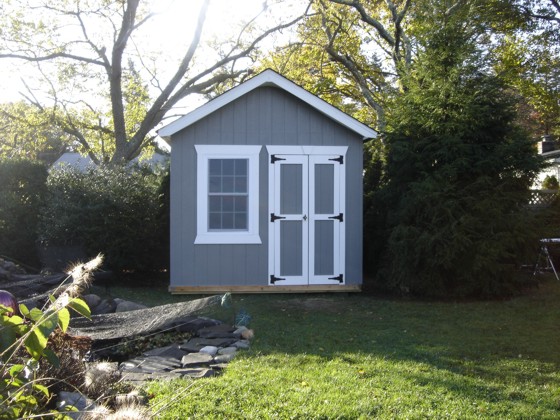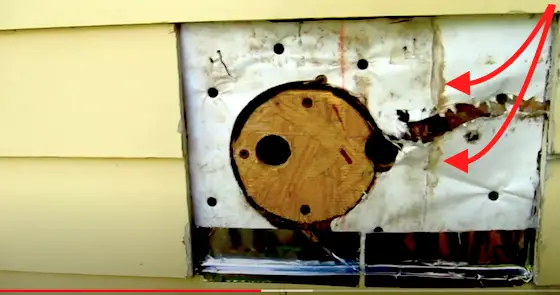This could be your first AsktheBuilder newsletter or it could be your 728th issue. If you’ve recently signed up, I welcome you. If you’re a subscriber in good standing, no matter how long you’ve been getting my missives, I’m glad you’re here too.
This is sort of a quirky issue. This week I’d like to share some random thoughts with you based on the requests for help I get at the Ask Tim page on AsktheBuilder.com.
But first, here’s this issue’s song. I love to listen to music while typing using the Dvorak method as I create this newsletter. CLICK or TAP HERE and enjoy this song with me. Get ready to Ooooo Ooooo Ooo Oooooo...
Treated Lumber Cracking
Two years ago, I started an experiment. I set out a short piece of treated 2x4 wood on a table on my deck. Over the past twenty-four months, it’s been in the direct sun and rain. It’s been covered with snow and ice, and scribbled on by my daughter while we played Yahtzee. BTW, if you want the dice to really jump around when you play Yahtzee, dump them in a clear 8x8 Pyrex glass pan that you might use for brownies. WOW, do the dice dance!
As part of the experiment, you should realize I didn’t seal this piece of treated wood. I wanted the wood to react to the elements so I could record an informative video that will save you lots of money and time.

CLICK or TAP HERE to watch this short video so you can PRESERVE your valuable treated lumber.
I’m willing to bet you three dark-chocolate Aglamesis pecandes that you discover something new about treated lumber and water that you didn’t know before. Are you willing to wager this sum? Will you make good on your debt if you lose?
The Fun Quiz!
Ask yourself what these things have in common:
- wrestling
- piece of lumber
- special bow tie
- vegetable
- tuxedo trim
Probe your tiny gray cells and delight in discovering how intelligent you are, yet none of your friends but me give you credit! Rest assured that if you and I lived in the same house I’d duly note your intelligence but realize I’d also playfully rib you about your dopey mistakes. Yes, turnabout is fair play!
CLICK or TAP HERE NOW and be amazed!
Vickie’s Frustration
Just two days ago, Vickie stopped by the website. Here’s what she wrote:
“Hi, Tim,
We are researching adding a shed to our backyard in Columbus, Ohio. For the life of me, I can not find shed specifications - maximum size without a permit and how to site near property lines - set forth by the city. I've googled and googled and searched through city building and zoning code without luck. I've called and couldn't get anyone to answer. Any suggestions?”
I wonder how you’d answer this. Imagine Vickie building a shed something like this one near a rear property line:

My first reaction was that Vickie should be congratulated for trying her best to search out the information.
Here’s what she did right. She went online and tried to find the City of Columbus Zoning Code. I did too, and within twenty seconds I located the correct page that was the entry point to the zoning codes.
I then used the search feature and came back with some juicy results. I’m quite sure with a little digging, I’d come out with the needed information.
But where did Vickie go wrong? In my opinion, deciding to call the office in hopes of getting the needed information was a mistake.
My advice to her was to make an appointment and then get on a bus or drive down to the office and talk to a zoning official in person.
Why is it important to go in person to the zoning office? Riddle me this:
How much do you think your shed will weigh and how easy would it be to move? If you get incorrect verbal information and are challenged by a neighbor after your new shed is built, how are you going to move the shed to the correct location?
You get one chance to get it right. You don’t want to do it over.
I’d want to walk out of the office with copies showing in black and white exactly where the shed can go. Person-to-person contact can make all the difference.
Nina from South America
It’s always fun to get international requests for help. It happens more often than you might imagine.
Nina wrote to me:
“I live in a hot and humid country with a rainy season. Builders here do not flash windows, so when we built our house 5 years ago, our windows were not flashed. Our house was built with clay blocks and was then plastered with cement. The windows are single pane with an aluminum frame.
They were screwed into the concrete. When the rain falls, it goes from the windows down the walls. We’re not sure how to fix the problem
Most likely we would have to import any materials we would need, seeing how flashing of windows is not really done here. I am not a fan of liquid flashing, as all the liquid/silicone products (from reputed) brands I have used around the house do not hold up well in our climate (in merely a matter of months they start to peel, crack, ...).
What would our options be? Taking out the windows? And then?
Thank you in advance for your guidance!”
It just so happens that a few days before, I had put in a new outdoor hose bib here at my house.
I recorded a video of the process. The hose bib is mounted to a block that rests on the wall and the lap siding butts into it.
In many respects, it’s very much like a window.
I sent Nina to THIS PAGE and asked her to watch the video to get a handle on how I flashed the block. I don’t know that I’ve seen another video out there like this nor anyone else doing it this way.
Too many people rely on caulk as a remedy. That’s a huge mistake.
CLICK or TAP HERE and watch this video. I’m pretty convinced it will open your eyes to what you need to do or what you need to make sure your builder or remodeler does.
Pay CLOSE ATTENTION to the caption of the screenshot PHOTO that has two curved red arrows. Here it is so you recognize it once you are at the page:
As I was recording the video, I failed to notice a HUGE CLUE that I wish I would have talked about in the video!!! Look at what the red arrows point to. Engage your critical-thinking skills.
Epic Mudslide
My college major was geology and I graduated from the University of Cincinnati. You wouldn’t think that Cincinnati would be at the center of the geology vortex, but it is.
Two things are quite notable about Cincinnati:
- It’s the world type section for Upper Ordovician stratigraphy and fossils. Geologists from across the world come to Cincinnati to study and collect fossils.
- It has or used to have, the highest per-capita damage anywhere in the USA for landslides. California gets all the press from its dramatic mudslides, but the Kope and Lower Fairview formations in Cincinnati are far more destructive.
Would you like to see your house slide into the ocean or river? I didn’t think so.
Did you know you can AVOID buying a house that’s built in a danger zone? It’s not hard to do.
CLICK or TAP HERE and see what happened in Alta, Norway, a few days ago. It’s heart-sickening.
That’s enough for a Sunday, right?
Tim Carter
Founder - www.AsktheBuilder.com
SOLD OUT BEST Cleaner! - www.StainSolver.com
Talk With Strangers! - www.W3ATB.com
Do It Right, Not Over!
P.S. Tell me something. How would you make a RAPID repair of a BIG HOLE in drywall?
Would you do it this way? CLICK or TAP HERE.
The post June 7, 2020 AsktheBuilder Newsletter appeared first on Ask the Builder.
Via builders feed http://www.rssmix.com/

No comments:
Post a Comment